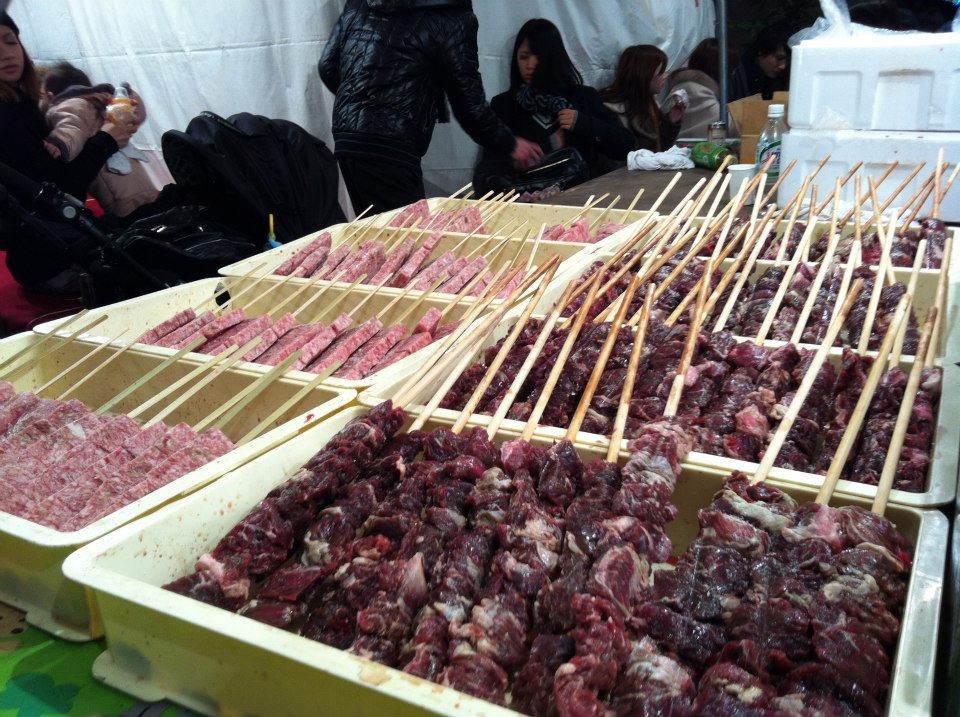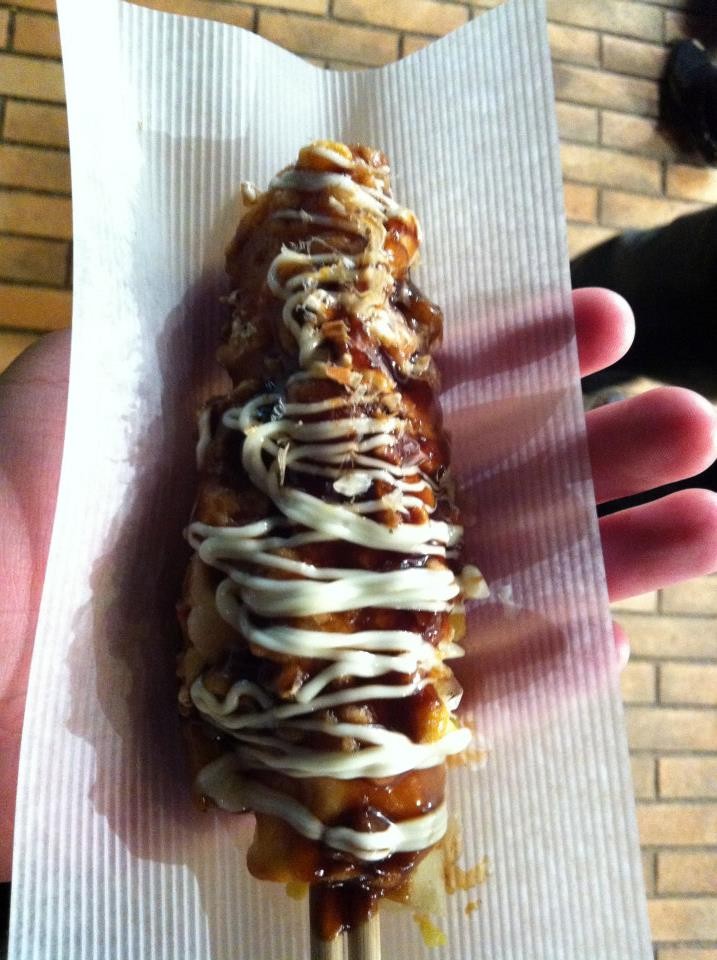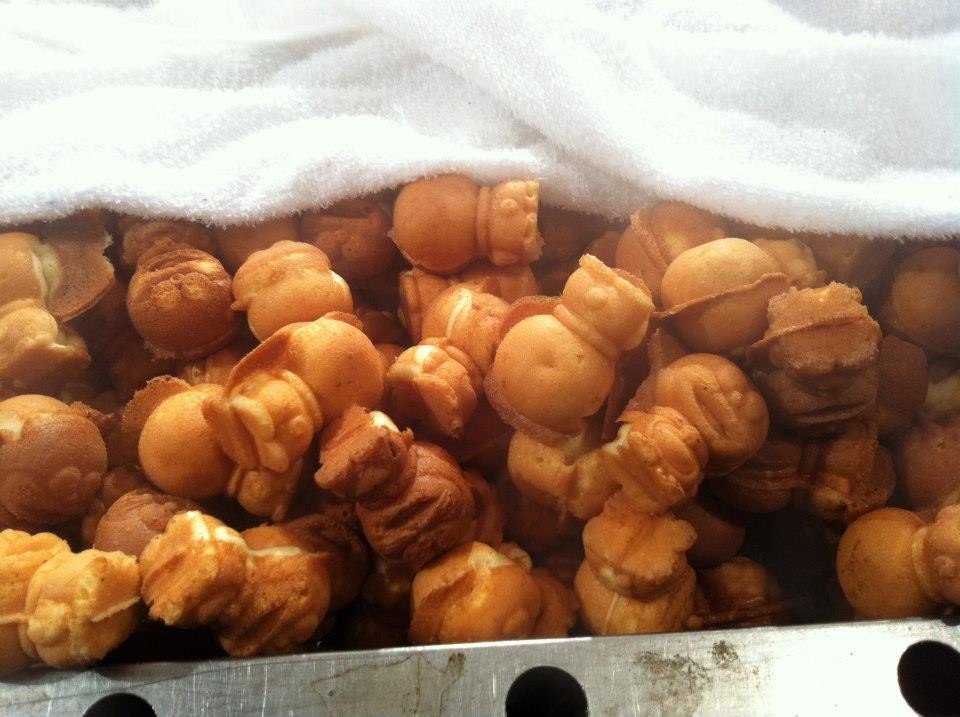Street foods is something in Asia is one of the many charms that make this continent such a go-to destination. For this edition of more street food goodness, I will take you for a delicious trip to Japan and share with you my countless experiences with really amazing street food. Perhaps the term ‘street food’ is not an appropriate description of the experience I would like to share with you. So for this recommendation of mine in Japan, I will be taking about local food that you can find on the street, small roads, and traditional fairs, festivals and markets!
Without further ado, let’s dive right in to one of the highlights during my time at a fair in Kobe, Japan. One of the most famous annual event that is a must-attend for locals and tourists alike is the Kobe Luminarie. This is a festival that brings the best of the winter period by displaying beautiful lights that stretches along a part of the city of Kobe. This unique light festival first began in the winter of 1995 to mark and act as a memorial for the disastrous Great Hanshin Earthquake that happened earlier in the same year. I have been told that the earthquake had a massive impact on the population of Kobe, and many families had to live without essentials such as electricity, gas and clean water. The lights that were then put up almost twelve months on from the earthquake in December, played an important role as a symbol that represents the unity of the city and the country, through elements of hope, recuperation and restoration. Oh, I was also told that the event was meant to be just a one-time display, but it was urged to continue on due to its deep and important message.
The lights are nothing short of spectacular. The design and patterns change every year to keep things new as it is now a very well-know attraction. Although I don’t have any pictures of the festival, you can google up Kobe Luminarie for a better idea of what this light festival has in store. I must say that I went there every single year while I was in Japan, to pay respect to those during the hard time and also, on a more positive note, to enjoy the occasion and eat some stunning festival food!
Luckily, I do keep pictures of my food adventures quite well. The last time I visited the Kobe Luminarie was back in the winter of 2012, mid of December I am not mistaken. After a walk to remember (literally), the end of the organised passage will see you walking into a maze of food stands. The variety of food available here is similar to many Japanese markets and fairs. You will have the usuals, like chicken karaage (deep-fried chicken), hot dogs, french fries, yakisoba, takoyaki, and other regular names. What I would highly recommend that you try if available, is this:

For this specific case, these were kobe beef, or arguably one of the best beefs you could get your hands on in the world. The term kobe beef might ring a bell as one of the most expensive and most sought after beef in the world. I am no Michelin-starred chef or a food expert, but coming from the very region that prides itself in this delicacy has given me a bit of knowledge. What makes kobe beef so special? The reasons really go on and on and I will probably need a separate post just to explain everything, but in short, the cattles that have been raised to become this superb beef have all gone unmatched process. As a result, the quality and marbling of the beef are off the chart, and the price in turns sky rockets.

The picture is not very clear but the boxes you see of the beef here is worth loads of money. I had a stick of what was advertised as kobe beef, and it was around 400YEN. It was not a huge stick, but I paid for the quality. I really did pay for the quality since it was absolutely divine and for a stand in the Japanese festival, it was the best beef I’ve ever had. Whether it was real or not, the beef was so tender, so fatty, and packed a punch of flavors. The beef was lightly seasoned with salt and pepper. When you bite into it, the quality of the beef speaks for itself. This is a must-try, I repeat, a must-try. If you do see a stand like this anywhere in Japan, be sure to line up regardless of how long the line already is. You really will not be disappointed.
I am not really sure what this one is called or how to describe it. It was just good in its own way. Okay, well it’s got a sweetish sauce that is brushed on top, then drizzles of mayo. If you see it, get it, so you could have a go!

For something a bit sweeter, try this unique snack, bebi-katsutera. The name may have thrown you off here, but with a little bit more research, the name second part of the name, katsutera, apparently came from the Portuguese language. History has it that this dessert was brought over from Portugal by travellers and missionaries who visited Japan around the 16th century. As a result, this sponge cake also made its way to the Japanese society. The dessert is claimed to be from the Nagasaki region, however, they’re in every single Japanese fair nowadays. I had a small back of these warm sponge cakes that came in the shape of famous cartoon, Doraemon. This is like your usual spongecake. The best part is that it’s always warm and the vendors always make them fresh. I would only get these when its cold in winter, since it would somewhat warm up the body. This is not the most delicious dessert, but one that you should try just for the experience.

Other items that I don’t have pictures for but would surely recommend that you try include chicken kaarage, shaved iced with colourful syrups - kakigori (for the warmer months), okonomiyaki (basically Japanese pancakes usually with cabbage, a bit of bacon, eggs and a lots of sauce and mayo), teriyaki (a stuffed pancake usually in the shape of a fish with stuffings like cream, red beans, cheese and chocolate), and last but not least, crepes.
Ultimately, going to a Japanese market, festival or fair is an experience on its own. The atmosphere you will get it unmatched anywhere else, and is something that you try to do without a doubt. You could do a bit more research about the area you’re in and the periods for the festivals. I would highly recommend that you go to these places with an empty stomach and a kind mindset for your budget, because you’re sure in for a treat!
For more awesome advices and hints on great Japanese eats both in Japan and Sydney, check out my other posts on my profile!
If you like the content of this post, or just want to check out some pictures that I take on my adventure, feel free to like and/or follow me on instagram at oat93, cheers!
 What to do Kobe,
Kobe,
Japan
What to do Kobe,
Kobe,
Japan






















